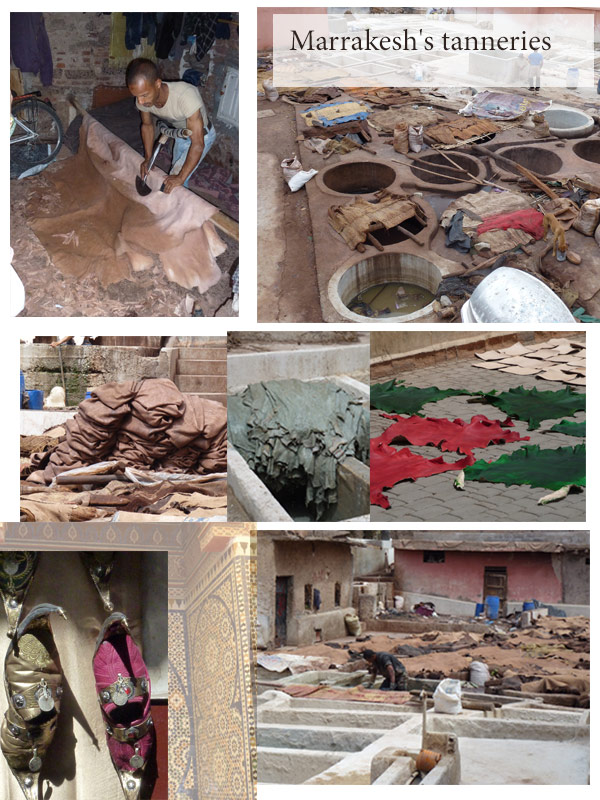A fascinating process.
Whilst visiting Marrakesh, we delved into the tanneries and went on a guided tour.
We were given a handful of mint to distract us from the pungent smell.
Here is our overview..
The tanneries use hundreds of concrete vats to process the skins.
Pigeon droppings, quicklime and water
The first process is to soak the skins in vats of quicklime and water to remove the remaining hairs and flesh. This is the first step in bringing the skins “back to life”.
The skins then need to be washed and pressed in other vats.
Next, two tanners need to work together at a vat where the skins are softened in a nauseating concoction of pigeon droppings.
Vats of water and blood
The skins are then need to be placed in a vat of water and blood, to strengthens them.
They are believed by some to gain a male and a female soul during the tanning process, which leads to their “rebirth”.
One of the workers separates and wrings the skins, which are suspended over one of the vats.
Dyeing the skins
Goat skins are then rubbed with pomegranate powder to colour them yellow. Olive oil is then applied to make them shiny.
Other natural products, such as bark, saffron, henna and poppy are also used to dye the skins.
The vats need to be kept covered during the day to prevent Marrakesh’s bright sunlight from affecting the process.
Many of the workers live locally in the area and their skills are passed down through generations
The skins are then left out in the warm sunshine to dry. The tanning process takes about 20 days from start to finish
